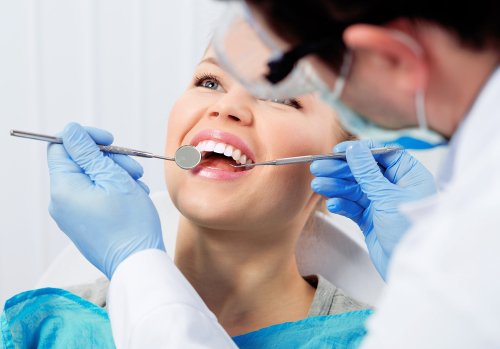Our Legacy Orthodontics PDFs
Our Legacy Orthodontics PDFs
Blog Article
Not known Facts About Legacy Orthodontics
Table of ContentsThe Only Guide for Legacy OrthodonticsThe smart Trick of Legacy Orthodontics That Nobody is DiscussingLegacy Orthodontics Can Be Fun For EveryoneThings about Legacy OrthodonticsLegacy Orthodontics Can Be Fun For Anyone
At Advanced Orthodontics, we provide clients with a alternative treatment experience. On top of that, we provide flexible treatment routines, versatile payment options and a fun, delightful experience. clear braces. Call ( 480) 357-4900 today for more details and routine an appointment.An orthodontist is a dental professional trained to diagnose, avoid, and treat teeth and jaw irregularities. Orthodontists work with individuals of all ages, from kids to adults.
Malocclusion, or misaligned teeth, can cause dental concerns, including dental cavity, gum condition, and difficult or excruciating chewing. Not everyone is born with straight teeth. If you have a bad bite or big spaces between your teeth, you may wish to get in touch with a dental professional specializing in orthodontic care.
Some Known Facts About Legacy Orthodontics.
( Photo Credit History: DigitalVision/Getty Images) Orthodontists use dealt with and removable oral devices, like dental braces, retainers, and bands, to transform the placement of teeth in your mouth. Orthodontic treatment is for dental problems, including: Misaligned teethBite problems, like an overbite or an underbiteCrowded teeth or teeth that are too far apartJaw misalignmentThe objective of orthodontic therapy is to enhance your bite.
While you may think of orthodontists as primarily for youngsters or teenagers that need dental braces, they can deal with dental troubles at any type of age. Orthodontists go to university, oral school, and orthodontic college.
All orthodontists are dental experts, but not all dental practitioners are orthodontists. Orthodontic residency programs supply extensive, focused instruction for dental experts. They concentrate on two areas: Exactly how to appropriately and safely relocate teeth How to correctly direct growth in the teeth, jaw, and faceOnce an orthodontist has actually completed training, they have the choice to come to be board accredited.
The Ultimate Guide To Legacy Orthodontics
Imbalance, or malocclusion, is one of the most typical factor people see an orthodontist. It is genetic and is the outcome of size differences between the upper and lower jaw or between the jaw and teeth. Malocclusion brings about tooth congestion, an irregular jaw, or uneven bite patterns. Malocclusion is generally treated with: Your orthodontist connects steel, ceramic, or plastic square bonds to your teeth.
If you have only minor malocclusion, you may have the ability to use clear dental braces, called aligners, as opposed to conventional dental braces (https://www.topratedlocal.com/legacy-orthodontics2-reviews). Some people need a headgear to help relocate teeth right into line with pressure from outside the mouth. After braces or aligners, you'll need to wear a retainer. A retainer is a personalized device that maintains your teeth in area.
They're frequently used on children. They can develop added room in the mouth without needing to draw teeth. If you have a serious underbite or overbite, you may need orthognathic surgery (additionally called orthodontic surgical procedure) to lengthen or reduce your jaw. Orthodontists make use of cables, surgical screws, or plates to support your jaw bone.
You might require to see an orthodontist if you have: Crowding or not adequate room for every one of your teethOverbite, when your top teeth come over your base teethUnderbite, when your base teeth are too much forwardSpacing or concerns with gapsCrossbite, which is when your top teeth fit behind your base teeth when your mouth is closedOpen bite or an upright void between your front base and upper teethMisplaced midline, when the center of your base and upper teeth don't line up Correcting a dental malocclusion can: Make biting, chewing, and speaking easierImprove the proportion of our face and your general appearanceEase pain from temporomandibular joint problemsSeparate your teeth and make them much easier to cleanse, assisting protect against dental cavity or cavities It's often a dental practitioner who initially notices misaligned teeth throughout a regular exam.
Not known Facts About Legacy Orthodontics

During your initial orthodontic examination, you'll likely have: An oral examPhotos taken of your face and smileDental X-raysPanoramic (360 degree) X-rays of your face and headImpressions to create mold and check this site out mildews of your teethThese tests will help your orthodontist understand how to continue with your treatment. leesburg orthodontist. An orthodontist is a dentist who's had training to treat your teeth and jaw
Orthodontists may perform surgical treatment, exams,X-rays,and even more to help you acquire a more comfy, healthier smile. An orthodontist is concentrated on your bite, so something like a cracked tooth would be handled by a dentist. Orthodontists are dentists but not all dentists are orthodontists. Orthodontists are focused on your bite, or the means your teeth fit together, and the straightness of your teeth.
Ever wondered exactly how celebs always appear to have flawlessly aligned teeth? The response commonly depends on the proficient hands of an orthodontist. What exactly does an orthodontist do? Orthodontists are dental experts who focus on fixing abnormalities in the teeth and jaws. Their expertise goes beyond simply creating a beautiful smile; it reaches improving your overall dental wellness and feature.
Legacy Orthodontics - The Facts

While braces are one of the most commonly acknowledged orthodontic treatment, orthodontists have a diverse toolkit at their disposal. The specific method picked depends on the extent of the situation, the patient's age, and specific choices. These tried-and-true dental braces use a system of braces adhered to the teeth and attached by wires.
Clear aligners, like Invisalign, are a prominent choice for people seeking an extra very discreet treatment alternative. These detachable trays are custom-made to considerably change the teeth's placement. Headwear may be used combined with dental braces or aligners to apply added targeted pressures, specifically for dealing with jaw discrepancies. In situations of narrow jaws, palatal expanders can be used to create space for appropriate tooth alignment.
Report this page